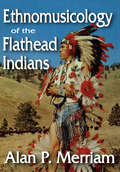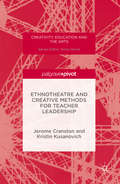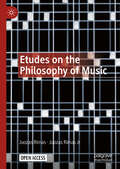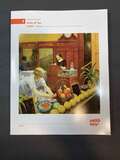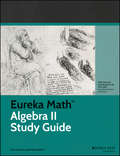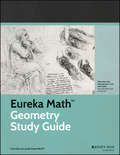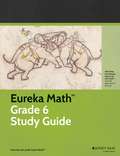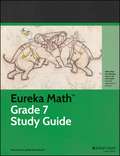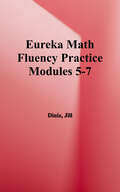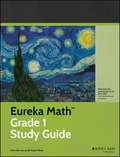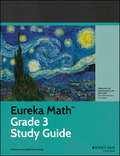- Table View
- List View
Ethnomusicology of the Flathead Indians
by Alan MerriamAll people, in no matter what culture, must be able to place their music firmly in the context of the totality of their beliefs, experiences, and activities, for without such ties, music cannot exist. This means that there must be a body of theory connected with any music system - not necessarily a theory of the structure of music sound, although that may be present as well, but rather a theory of what music is, what it does, and how it is coordinated with the total environment, both natural and cultural, in which human beings move.The Flathead Indians of Western Montana (just over 26,000 in number as of the 2000 census) inhabit a reservation consisting of 632,516 acres of land in the Jocko and Flathead Valleys and the Camas Prairie country, which lie roughly between Evaro and Kalispell, Montana. The reservation is bounded on the east by the Mission Range, on the west by the Cabinet National Forest, on the south by the Lolo National Forest, and on the north by an arbitrary line, approximately bisecting Flathead Lake about twenty-four miles south of Kalispell. The area is one of the richest agricultural regions in Montana, and fish and game are abundant. The Flathead are engaged in stocking, timbering, and various agricultural enterprises.For the Flathead, the most important single fact about music and its relationship to the total world is its origin in the supernatural sphere. All true and proper songs, particularly in the past, owe their origin to a variety of contacts experienced by humans with beings which, though a part of this world, are superhuman and the source of both individual and tribal powers and skills. Thus a sharp distinction is drawn by the Flathead between what they call "make-up" and all other songs. Merriam's pioneering work in the relationship of ethnography and musicology remains a primary source in this field in anthropology.
Ethnotheatre and Creative Methods for Teacher Leadership
by Jerome Cranston Kristin KusanovichThis book addresses the lived challenges to teacher leadership. It illustrates an arts-based research approach that effectively highlights the broader context of relational dynamics between adults at school, using one-act plays to open up difficult conversations on complex issues. School leadership has, ostensibly, a performative dimension. Teacher leaders enact leadership from a more vulnerable platform than those with administrative positions, while they try to thrive in roles which are not always clear from their pre-service preparation. Early-career teachers are often not aware of the very real hazards that can accompany their initial foray into leadership. This book encourages creative thinking about how to enact the teacher role to better embed and advocate for a supportive and just system.
Ett holografiskt universum: En introduktion
by Brahma Kumari PariGenom att läsa den här boken får du en bättre förståelse för det holografiska universum och din förmåga att få erfarenheter i det holografiska universum ökar. Genom att hålla ett öppet och tydligt sinne (när du läser) kan du uppleva vad författaren har upplevt och du kommer att kunna förstå vad författaren förklarar. Istället för att bara läsa orden, läs det med avsikt att förstå djupet i det som förklaras. Fortsätt att fundera över det tills du upplever och förstår vad som sägs om det Holografiska universum. Fortsätt läsa boken om och om igen tills du har förstått den så att din förmåga att få erfarenheter i det Holografiska universum ökar. I den här boken är förklaringarna om det Holografiska universum baserade på: 1. Guds vägledning, 2. kunskapen om Brahma Kumaris, 3. Kvantmekanik (ingenting i denna bok strider mot kvantmekanik), 4. forskning, 5. erfarenheter av författaren, 6. kunskapen om chakra och aura, 7. de forntida hinduiska texterna, etc. Det finns förklaringar i denna e-bok om: 1. Holografiska universums olika uppdelningar och natur. 2. hur allt händer enligt världsdramat (Akashic Records). 3. hur människor lever i två slags världar, den verkliga världen och den holografiska världen samtidigt. 4. Holografisk film av hologram som vi deltar i. 5. hur olika slags världar finns. 6. hur kvantenergier materialiserar de fysiska kropparna och den fysiska världen genom det holografiska universum. 7. hur skapelseprocessen sker genom virvlarna och chakras. 8. Nära dödsupplevelser. 9. det kosmiska medvetandet. 10. hur subtila dimensioner, holografiska kroppar och subtila kroppar skapas. 11. hur aura används under upplevelser. 12. hur kvantenergier med olika tätheter materialiserar en annan typ av verklig värld för oss att leva i. 13. hur det holografiska universum förändras när världen förvandlas. 14. Brahma Kumaris meditation och kunskap. F
Etudes on the Philosophy of Music
by Juozas Rimas Juozas Rimas Jr.Drawing on the author's four decades of experience as a concert oboist, this open access book studies a number of foundational issues in the philosophy of music, such as musical meaning and expression, musical ontology and the existence of the musical work, the relation between music and language, and the phenomenology of music. The book surveys the development of Western classical music from the Baroque era through to the 20th century, both from the perspective of contemporary Lithuanian philosophers such as Girnius, Maceina, Šliogeris, and Jackūnas, and 20th century European philosophy. In addition to discussing key questions in the philosophy of music, the book also analyses technical musical terms such as articulation, phrasing, and rhythm.
Eureka Math 2, [Grade] 1, Learn: Units of Ten, Module 5: Place Value Concepts to Compare, Add, and Substract
by Great MindsEureka Math 2, [Grade] 1, Learn: Units of Ten, Module 5: Place Value Concepts to Compare, Add, and Substract
Eureka Math Algebra I Study Guide
by Great MindsThe Eureka Math curriculum provides detailed daily lessons and assessments to support teachers in integrating the Common Core State Standards for Mathematics (CCSSM) into their instruction. The companion guides to Eureka Math gather the key components of the curriculum for each grade into a single location. Both users and non-users of Eureka Math can benefit equally from the content presented. The CCSSM require careful study. A thorough study of the Guidebooks is a professional development experience in itself as users come to better understand the standards and the associated content. Each book includes narratives that provide educators with an overview of what students learn throughout the year, information on alignment to the instructional shifts and the standards, design of curricular components, and descriptions of mathematical models. The Guidebooks can serve as either a self-study professional development resource or as the basis for a deep group study of the standards for a particular grade. For teachers who are either brand new to the classroom or to the Eureka Math curriculum, the Grade Level Guidebooks introduce them not only to Eureka Math but also to the content of the grade level in a way they will find manageable and useful. Teachers already familiar with the curriculum will also find this resource valuable as it allows for a meaningful study of the grade level content in a way that highlights the coherence between modules and topics. The Guidebooks allow teachers to obtain a firm grasp on what it is that students should master during the year.
Eureka Math Curriculum Guide
by Great MindsEureka Math is a comprehensive, content-rich PreK-12 curriculum that follows the focus and coherence of the Common Core State Standards in Mathematics (CCSSM) and carefully sequences the mathematical progressions into expertly crafted instructional modules. The companion Study Guides to Eureka Math gather the key components of the curriculum for each grade into a single location, unpacking the standards in detail so that both users and non-users of Eureka Math can benefit equally from the content presented. Each of the Eureka Math Curriculum Study Guides includes narratives that provide educators with an overview of what students should be learning throughout the year, information on alignment to the instructional shifts and the standards, design of curricular components, approaches to differentiated instruction, and descriptions of mathematical models. The Study Guides can serve as either a self-study professional development resource or as the basis for a deep group study of the standards for a particular grade. For teachers who are new to the classroom or the standards, the Study Guides introduce them not only to Eureka Math but also to the content of the grade level in a way they will find manageable and useful. Teachers familiar with the Eureka Math curriculum will also find this resource valuable as it allows for a meaningful study of the grade level content in a way that highlights the coherence between modules and topics. The Study Guides allow teachers to obtain a firm grasp on what it is that students should master during the year. The Eureka Math Curriculum Study Guide, Grade 2 provides an overview of all of the Grade 2 modules, including Sums and Differences to 20; Addition and Subtraction of Length Units; Place Value, Counting, and Comparison of Numbers to 1,000; Addition and Subtraction Within 200 with Word Problems to 100; Addition and Subtraction Within 1,000 with Word Problems to 100; Foundations of Multiplication and Division; Problem Solving with Length, Money, and Data; and Time, Shapes, and Fractions as Equal Parts of Shapes.
Eureka Math Geometry Study Guide
by Great MindsThe Eureka Math curriculum provides detailed daily lessons and assessments to support teachers in integrating the Common Core State Standards for Mathematics (CCSSM) into their instruction. The companion guides to Eureka Math gather the key components of the curriculum for each grade into a single location. Both users and non-users of Eureka Math can benefit equally from the content presented. The CCSSM require careful study. A thorough study of the Guidebooks is a professional development experience in itself as users come to better understand the standards and the associated content. Each book includes narratives that provide educators with an overview of what students learn throughout the year, information on alignment to the instructional shifts and the standards, design of curricular components, and descriptions of mathematical models. The Guidebooks can serve as either a self-study professional development resource or as the basis for a deep group study of the standards for a particular grade. For teachers who are either brand new to the classroom or to the Eureka Math curriculum, the Grade Level Guidebooks introduce them not only to Eureka Math but also to the content of the grade level in a way they will find manageable and useful. Teachers already familiar with the curriculum will also find this resource valuable as it allows for a meaningful study of the grade level content in a way that highlights the coherence between modules and topics. The Guidebooks allow teachers to obtain a firm grasp on what it is that students should master during the year.
Eureka Math Grade 6 Study Guide
by Great MindsEureka Math is a comprehensive, content-rich PreK-12 curriculum that follows the focus and coherence of the Common Core State Standards in Mathematics (CCSSM) and carefully sequences the mathematical progressions into expertly crafted instructional modules. The companion Study Guides to Eureka Math gather the key components of the curriculum for each grade into a single location, unpacking the standards in detail so that both users and non-users of Eureka Math can benefit equally from the content presented. Each of the Eureka Math Curriculum Study Guides includes narratives that provide educators with an overview of what students should be learning throughout the year, information on alignment to the instructional shifts and the standards, design of curricular components, approaches to differentiated instruction, and descriptions of mathematical models. The Study Guides can serve as either a self-study professional development resource or as the basis for a deep group study of the standards for a particular grade. For teachers who are new to the classroom or the standards, the Study Guides introduce them not only to Eureka Math but also to the content of the grade level in a way they will find manageable and useful. Teachers familiar with the Eureka Math curriculum will also find this resource valuable as it allows for a meaningful study of the grade level content in a way that highlights the coherence between modules and topics. The Study Guides allow teachers to obtain a firm grasp on what it is that students should master during the year. The Eureka Math Curriculum Study Guide, Grade 6 provides an overview of all of the Grade 6 modules, including Ratios and Unit Rates; Arithmetic Operations Including Dividing by a Fraction; Rational Numbers; Expressions and Equations; Area, Surface Area, and Volume Problems; Statistics.
Eureka Math Grade 7 Study Guide
by Great MindsEureka Math is a comprehensive, content-rich PreK-12 curriculum that follows the focus and coherence of the Common Core State Standards in Mathematics (CCSSM) and carefully sequences the mathematical progressions into expertly crafted instructional modules. The companion Study Guides to Eureka Math gather the key components of the curriculum for each grade into a single location, unpacking the standards in detail so that both users and non-users of Eureka Math can benefit equally from the content presented. Each of the Eureka Math Curriculum Study Guides includes narratives that provide educators with an overview of what students should be learning throughout the year, information on alignment to the instructional shifts and the standards, design of curricular components, approaches to differentiated instruction, and descriptions of mathematical models. The Study Guides can serve as either a self-study professional development resource or as the basis for a deep group study of the standards for a particular grade. For teachers who are new to the classroom or the standards, the Study Guides introduce them not only to Eureka Math but also to the content of the grade level in a way they will find manageable and useful. Teachers familiar with the Eureka Math curriculum will also find this resource valuable as it allows for a meaningful study of the grade level content in a way that highlights the coherence between modules and topics. The Study Guides allow teachers to obtain a firm grasp on what it is that students should master during the year. The Eureka Math Curriculum Study Guide, Grade 7 provides an overview of all of the Grade 7 modules, including Ratios and Proportional Relationships; Rational Numbers; Expressions and Equations; Percent and Proportional Relationships; Statistics and Probability; Geometry.
Eureka Math Practice: Grade 3 Fluency, Modules 5-7
by Great MindsEureka Math fluency activities provide differentiated practice through a variety of formats--some are conducted orally, some use manipulatives, others use a personal whiteboard, and still others use a handout and paper-and-pencil format. Eureka Math Practice provides each student with the printed fluency exercises for his or her grade level.
Eureka Math Study Guide
by Great MindsEureka Math is a comprehensive, content-rich PreK-12 curriculum that follows the focus and coherence of the Common Core State Standards in Mathematics (CCSSM) and carefully sequences the mathematical progressions into expertly crafted instructional modules. The companion Study Guides to Eureka Math gather the key components of the curriculum for each grade into a single location, unpacking the standards in detail so that both users and non-users of Eureka Math can benefit equally from the content presented. Each of the Eureka Math Curriculum Study Guides includes narratives that provide educators with an overview of what students should be learning throughout the year, information on alignment to the instructional shifts and the standards, design of curricular components, approaches to differentiated instruction, and descriptions of mathematical models. The Study Guides can serve as either a self-study professional development resource or as the basis for a deep group study of the standards for a particular grade. For teachers who are new to the classroom or the standards, the Study Guides introduce them not only to Eureka Math but also to the content of the grade level in a way they will find manageable and useful. Teachers familiar with the Eureka Math curriculum will also find this resource valuable as it allows for a meaningful study of the grade level content in a way that highlights the coherence between modules and topics. The Study Guides allow teachers to obtain a firm grasp on what it is that students should master during the year. The Eureka Math Curriculum Study Guide, Grade 1 provides an overview of all of the Grade 1 modules, including Sums and Differences to 10; Introduction to Place Value Through Addition and Subtraction Within 20; Ordering and Comparing Length Measurements as Numbers; Place Value, Comparison, Addition and Subtraction to 40; Identifying, Composing, and Partitioning Shapes; and Place Value, Comparison, Addition and Subtraction to 100.
Eureka Math Study Guide: A Story of Units, Grade 3 (Common Core Mathematics)
by Great MindsEureka Math is a comprehensive, content-rich PreK–12 curriculum that follows the focus and coherence of the Common Core State Standards in Mathematics (CCSSM) and carefully sequences the mathematical progressions into expertly crafted instructional modules. The companion Study Guides to Eureka Math gather the key components of the curriculum for each grade into a single location, unpacking the standards in detail so that both users and non-users of Eureka Math can benefit equally from the content presented. <P><P> Each of the Eureka Math Curriculum Study Guides includes narratives that provide educators with an overview of what students should be learning throughout the year, information on alignment to the instructional shifts and the standards, design of curricular components, approaches to differentiated instruction, and descriptions of mathematical models. The Study Guides can serve as either a self-study professional development resource or as the basis for a deep group study of the standards for a particular grade. For teachers who are new to the classroom or the standards, the Study Guides introduce them not only to Eureka Math but also to the content of the grade level in a way they will find manageable and useful. Teachers familiar with the Eureka Math curriculum will also find this resource valuable as it allows for a meaningful study of the grade level content in a way that highlights the coherence between modules and topics. The Study Guides allow teachers to obtain a firm grasp on what it is that students should master during the year.<P> The Eureka Math Curriculum Study Guide, Grade 3 provides an overview of all of the Grade 3 modules, including Properties of Multiplication and Division and Solving Problems with Units of 2–5 and 10; Place Value and Problem Solving with Units of Measure; Multiplication and Division with Units of 0, 1, 6–9, and Multiples of 10; Multiplication and Area; Fractions as Numbers on the Number Line; and Collecting and Displaying Data.
Eureka Math Study Guide: A Story of Units, Grade 5 (Common Core Mathematics)
by Great MindsEureka Math is a comprehensive, content-rich PreK–12 curriculum that follows the focus and coherence of the Common Core State Standards in Mathematics (CCSSM) and carefully sequences the mathematical progressions into expertly crafted instructional modules. The companion Study Guides to Eureka Math gather the key components of the curriculum for each grade into a single location, unpacking the standards in detail so that both users and non-users of Eureka Math can benefit equally from the content presented. <P><P> Each of the Eureka Math Curriculum Study Guides includes narratives that provide educators with an overview of what students should be learning throughout the year, information on alignment to the instructional shifts and the standards, design of curricular components, approaches to differentiated instruction, and descriptions of mathematical models. The Study Guides can serve as either a self-study professional development resource or as the basis for a deep group study of the standards for a particular grade. For teachers who are new to the classroom or the standards, the Study Guides introduce them not only to Eureka Math but also to the content of the grade level in a way they will find manageable and useful. Teachers familiar with the Eureka Math curriculum will also find this resource valuable as it allows for a meaningful study of the grade level content in a way that highlights the coherence between modules and topics. The Study Guides allow teachers to obtain a firm grasp on what it is that students should master during the year.<P> The Eureka Math Curriculum Study Guide, Grade 5 provides an overview of all of the Grade 5 modules, including Place Value and Decimal Fractions; Multi-Digit Whole Number and Decimal Fraction Operations; Addition and Subtraction of Fractions; Multiplication and Division of Fractions and Decimal Fractions; Addition and Multiplication with Volume and Areal; Problem Solving with the Coordinate Plane.
Eurhythmics for Autism and Other Neurophysiologic Diagnoses: A Sensorimotor Music-Based Treatment Approach
by Stephen M. Shore Dorita S. BergerIn Eurhythmics for Autism and Other Neurophysiologic Diagnoses, Dorita S. Berger reveals how Eurhythmics, a method of teaching the musical concepts of rhythm, structure and expression kinaesthetically through movement, can help develop sensorimotor skills in children and adults with autism and other special needs. Covering both theory and practice, she explains this innovative, music-based approach and how it can also address cognitive and sensory issues in adults with debilitating conditions, such as dementia or post-traumatic stress disorder. With a particular emphasis on autism, she provides clear and adaptable session plans, suitable for working with children and adults of all ages.
Euro-Asian Encounters on 21st-Century Competency-Based Curriculum Reforms: Cultural Views on Globalization and Localization
by Daniel Tröhler Weili ZhaoThis book offers a geographically unique cultural comparative lens to examine the issue of transnational curriculum knowledge (re)production. Prompted by the ongoing competency-based curriculum reforms on a global scale, this book examines where global frameworks like the OECD’s core competency definitions are rooted and how they are borrowed, resisted, and/or re-contextualized in various European states with a Christian, foremost Protestant educational–cultural heritage and Asian countries with a Confucian educational–cultural heritage. It highlights the roles that various factors, such as history, culture, religious attitudes, ideology, and state governance play in nation-states’ re-contextualization of global curriculum policies and practices beyond a simplistic and dualistic globalism/power and nationalism/resistance dynamic. In doing so, it provides a global context to better understand individual nation-state’s continuing curriculum reforms and school practices. At the same time, it situates individual nation-state’s latest curriculum reforms and practices within an international community for healthy dialogues and mutual sharing. By selecting two educational–cultural systems and wisdom—Christian-Protestant and Confucian—it also offers a springboard for international curriculum studies beyond the usual confinement of geopolitical nation-state constructs. It not only sheds new light on each nation-state’s curriculum policies and practices, but also creates new collaboration spaces within similar and across disparate cultural–educational regions. With its wide geopolitical and educational–cultural scope, this book appeals to a global market and can be used in a variety of undergraduate and graduate courses in comparative education, history of education, curriculum theory, school and society, and curriculum history.
Europe (SparkNotes History Notes)
by SparkNotesEurope (1848-1871) (SparkNotes History Note) Making the reading experience fun! SparkNotes History Guides help students strengthen their grasp of history by focusing on individual eras or episodes in U.S. or world history. Breaking history up into digestible lessons, the History Guides make it easier for students to see how events, figures, movements, and trends interrelate. SparkNotes History Guides are perfect for high school and college history classes, for students studying for History AP Test or SAT Subject Tests, and simply as general reference tools.Each note contains a general overview of historical context, a concise summary of events, lists of key people and terms, in-depth summary and analysis with timelines, study questions and suggested essay topics, and a 50-question review quiz.
Europe (SparkNotes History Notes)
by SparkNotesEurope (1815-1848) (SparkNotes History Note) Making the reading experience fun! SparkNotes History Guides help students strengthen their grasp of history by focusing on individual eras or episodes in U.S. or world history. Breaking history up into digestible lessons, the History Guides make it easier for students to see how events, figures, movements, and trends interrelate. SparkNotes History Guides are perfect for high school and college history classes, for students studying for History AP Test or SAT Subject Tests, and simply as general reference tools.Each note contains a general overview of historical context, a concise summary of events, lists of key people and terms, in-depth summary and analysis with timelines, study questions and suggested essay topics, and a 50-question review quiz.
Europe (SparkNotes History Notes)
by SparkNotesEurope (1871-1914) (SparkNotes History Note) Making the reading experience fun! SparkNotes History Guides help students strengthen their grasp of history by focusing on individual eras or episodes in U.S. or world history. Breaking history up into digestible lessons, the History Guides make it easier for students to see how events, figures, movements, and trends interrelate. SparkNotes History Guides are perfect for high school and college history classes, for students studying for History AP Test or SAT Subject Tests, and simply as general reference tools.Each note contains a general overview of historical context, a concise summary of events, lists of key people and terms, in-depth summary and analysis with timelines, study questions and suggested essay topics, and a 50-question review quiz.
Europe at School: A Study of Primary and Secondary Schools in France, West Germany, Italy, Portugal & Spain (Routledge Library Editions: Comparative Education #12)
by Norman NewcombeOriginally published in 1977. This is a lively account of the day-to-day running of European schools based in five countries - France, West Germany, Italy, Spain and Portugal. It outlines the organisation of education in these countries, and examines aspects of curriculum, teaching methods, examinations, attitudes of teachers and pupils, buildings, equipment, out-of-school activities, pastoral care, discipline and rules and depicts what it is like to be a pupil or teacher in a European school. The schools discussed are mainly primary and lower secondary grades - the basic compulsory education of each country. Details of working hours, programmes and curricula which are, notably, often government controlled, are given in Appendices. But the author stresses that his aim throughout has been to show how individual schools work and adopt these rules to their own situation. He discusses the relative advantages and drawbacks of different educational systems, and draws his own conclusions about the favourable impressions he gained from many schools and the Awful Warning he saw in a few. This survey throws as much light on schools at home as on those in Europe and suggests that we have a good deal to learn from our neighbours.
Europe in the Classroom: World Culture and Nation-Building in Post-Socialist Romania (Palgrave Studies in Educational Media)
by Simona SzakácsThis book provides an unconventional account of post-1989 education reform in Romania. By drawing on policy documentation, interviews with key players, qualitative data from everyday school contexts, and extensive textbook analysis, this groundbreaking study explores change within the Romanian education system as a process that institutionalises world culture through symbolic mediation of the concept ‘Europe’. The book argues that the education system’s structural and organisational evolution through time is decoupled from its self-depiction by ultimately serving a nation-building agenda. It does so despite notable changes in the discourse reflecting increasingly transnational definitions of the mission of the school in the post-1989 era. The book also suggests that the notions of ‘nation’ and ‘citizen’ institutionalised by the school are gradually being redefined as cosmopolitan, matching post-war patterns of post-national affiliations on a worldwide level.
Europe's Lifelong Learning Markets, Governance and Policy: Using an Instruments Approach (Palgrave Studies in Adult Education and Lifelong Learning)
by Marcella Milana Gosia Klatt Sandra VatrellaThis book explores European governance and policy coordination within lifelong learning markets. Using an instruments approach, the editors and contributors examine the ways in which governance mechanisms employed by the European Union influence policy to regulate lifelong learning, and intervene in lifelong learning markets, at both European and national levels. Filling an important gap in the current literature, this book examines how strengthened policy coordination at the EU level contributed to the blurring of boundaries between policy fields and the redefinition of the function of adult education after the 2008 recession. Divided into three parts, this book draws on a range of case studies from countries including Spain, Denmark, Bulgaria and the UK. It will be of interest and value to students and scholars of education policy and governance, adult education and lifelong learning.
European Dimensions and the Secondary School Curriculum (Routledge Library Editions: Curriculum #9)
by Ivor Goodson Veronica McGivneyOriginally published in 1985. ‘Europe‘ and the EEC seemed to be virtually synonymous for the majority of our population and the ambivalent feelings many people have about the Community, together with the consistently bad press it received in the UK, seemed to engender a hostility in educational circles towards teaching about Europe as a whole. However, if one of the aims of education is to increase children’s awareness, tolerance and understanding of the world about them; to widen their experience and horizons; then teaching about the wider world must have a place in the curriculum. This book argues for education about Europe, not necessarily in favour of Europe, breaking down the national insularity of the UK curriculum and using Europe as one convenient ‘window on the wider world’.
European Higher Education Area 2030: Bridging Realities for Tomorrow’s Higher Education
by Adrian Curaj Remus Pricopie Cezar Mihai HâjThis open access book presents the major outcomes of the fifth edition of the Future of Higher Education – Bologna Process Researchers’ Conference (FOHE-BPRC5), organized by the Executive Agency for Higher Education, Research, Development and Innovation Funding (UEFISCDI) prior to the 2024 Ministerial Conference in Tirana. The Conference is considered a landmark in the European Higher Education Area, encouraging dialogue between researchers and policy-makers. The resulting book provides a forward-looking perspective on how the EHEA is evolving in response to current challenges and opportunities, by focusing on topics such as internationalization, equity and employability, fundamental values, impact of digitalization or innovative learning and teaching. The papers presented offer insights in these areas, illustrating successful or failed implementations within the EHEA and are published in open access format to ensure that the researchers’ perspectives are widely available to European policy and decision makers. Since 2024 marks the first post pandemic edition of the Conference, it is a good moment to not only to take stock of the challenges brought by the Covid-19 pandemic and the war in Ukraine, but also to explore how scientific research can support policy into shaping the directions for the future to come.
European Higher Education Area: Challenges For A New Decade
by Adrian Curaj Ligia Deca Remus PricopieThis open access book presents the major outcomes of the fourth edition of the Future of Higher Education – Bologna Process Researchers Conference (FOHE-BPRC 4) which was held in January 2020 and which has already established itself as a landmark in the European higher education environment. The conference is part of the official calendar of the European Higher Education Area (EHEA) for events that promote and sustain the development of EHEA. The conference provides a unique forum for dialogue between researchers, experts and policy makers in the field of higher education, all of which is documented in this proceedings volume. The book focuses on the following five sub-themes: - Furthering the Internationalization of Higher Education: Particular - Challenges in the EHEA - Access and Success for Every Learner in Higher Education - Advancing Learning and Teaching in the EHEA: Innovation and Links With Research - The Future of the EHEA - Principles, Challenges and Ways Forward - Bologna Process in the Global Higher Education Arena. Going Digital? While acknowledging the efforts and achievements so far at EHEA level, the Paris Ministerial Communiqué highlights the need to intensify crossdisciplinary and cross-border cooperation. One of the ways to achieve this objective is to develop more efficient peer-learning activities, involving policymakers and other stakeholders from as many member states as possible for which this book provides a platform. It acknowledges the importance of a continued dialogue between researchers and decisionmakers and benefits from the experience already acquired, this way enabling the higher education community to bring its input into the 2020. European Higher Education Area (EHEA) priorities for 2020 onwards. European Higher Education Area: Challenges for a New Decade marks 21 years of Bologna Process and 10 years of EHEA and brings together an unique collection of contributions that not only reflect on all that has been achieved in these years, but more importantly, shape directions for the future. This book is published under an open access CC BY license.
